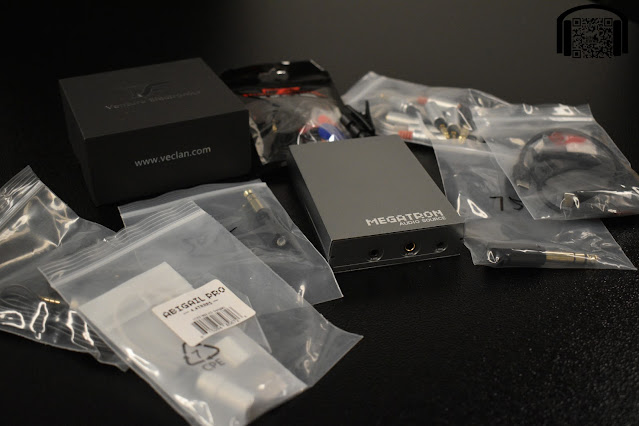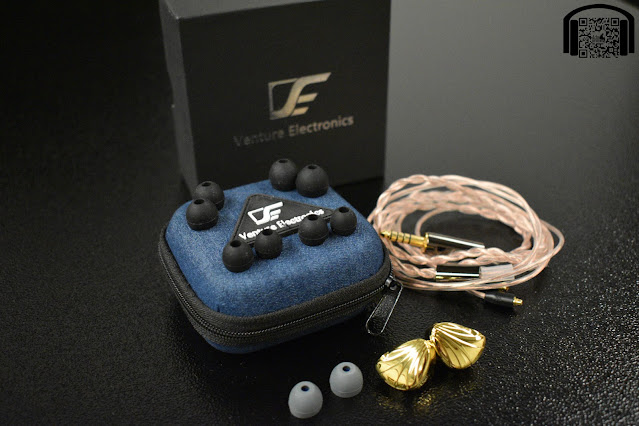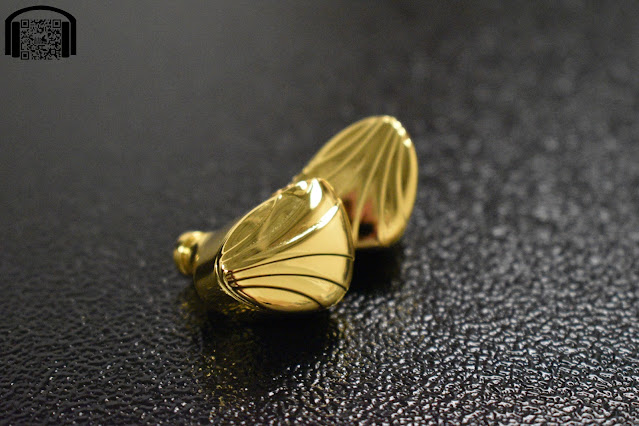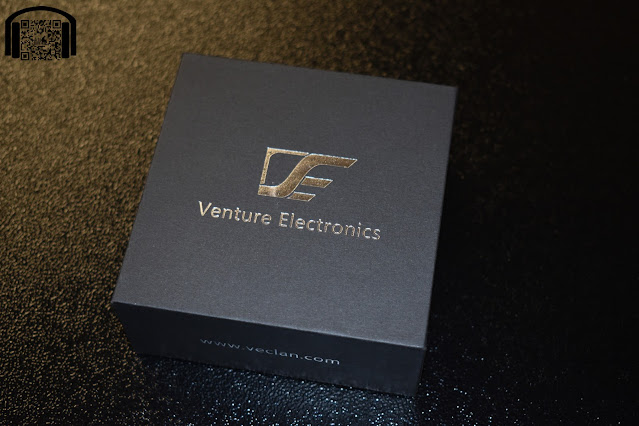- Get link
- X
- Other Apps
English | Español
TLDR version on YouTube: TDLR - Venture Electronics SIE
The Venture Electronics SIE have been sent to me directly by Venture Electronics, for me to try them out and publish this review. I have not received any requests from Venture Electronics, in fact, I haven’t even been in contact with them directly, they sent them via a mutual friend. Therefore, I will do my best, as always, to be unbiased and sincere in this review.You can find the SIE direct from Venture Electronics here: https://www.veclan.com/engappliance_sel_one?eng_ApplianceVo.eac_id=89
As with all links that I publish, this is a non-affiliate link, I just searched google for the IEMs and shared the link.
To avoid being repetetive in my reviews, you can find all the info about how I create the reviews, equipment used, how I receive the products and how to interpret my reviews by visiting: About my reviews
Intro…
Some of you may remember that a while back I did a sort of mega-mini-review of a bunch of products by Venture Electronics (you can find it here). There were a lot of products to cover in not much time, so I basically shared my brief opinions on each of them.
This time I was asked if I would like to try out the SIE, a set of IEMs by the brand, without being restricted to a time frame. I said I would and a couple of weeks later received a box of things from them, which contained not only the IEMs but also the Megatron (which I touched on briefly in my “Venture Electronics ad-Venture”), a set of earbuds and quite a few impedance adapters amongst other things.
I will get to the rest of the contents at a later date but today I am focusing on the SIE, which are a set of IEMs that I knew absolutely nothing about before receiving them. In fact, I did my usual test period and detailed listening tests before researching them at all, so I have only found out the price of them just before putting together this review. As is usual with VE, they are available with multiple purchase options, costing around 90€ with a choice of 3.5mm, 2.5mm or 4.4mm cable terminations. You can also opt for them together with the Megatron for around 140€.
Presentation…
I can’t really say what the official presentation of the SIE is like as I received them in a box with a lot of other items. The IEMs were packaged, along with their cable and 5 sets of silicone tips, inside a semi rigid transport case that was inside a small black box with the VE logo on the front.
As I am not sure if this is how they will be packaged for retail, I will refrain from passing comment on the presentation.
Build and aesthetics…
The IEMs use gold coloured shells in a rather generic rounded triangle shape with a faceplate that resembles a seashell. They sort of remind me of the shells of a Reecho (the model name I forget) or something from the likes of Fiio as far as the shape and design.
As I have said many times in the past, I am not really a fan of gold colours and these are very gold coloured. We all know that aesthetics are a very personal thing, so each will have their preferences.
The build seems to be decent enough, all in metal, and while they opt for MMCX connectors, which are not my preference, they seem to be of good enough quality. At least based on the few times that I have detached/attached them.
The cable is simple but does it’s job and the option of choosing between balanced or single ended at no extra cost is definitely a plus. The MMCX connector housings are plastic but the rest of the hardware on the cable is metal.
In general, I can’t say that the aesthetics and build are something that I am crazy about but I find them comfortable enough and don’t really have any specific complaints about them that are not totally personal (such as the gold).
Sound…
All tracks mentioned are clickable links that allow you to open the reference track in the streaming service of your choice (YouTube, Tidal, Qobuz, Spotify, etc.)
The SIE are a set of IEMs that definitely focus on providing bass, specifically midbass, and plenty of it. As you can see from the following graph, in comparison to my usual preference target, they are way above it in the midbass range:
If I were to just look at the graph of these IEMs, I would quickly decide that I would not be a fan of the tuning and that it is very probable that the midbass range would cause me fatigue and even a sensation of nausea over extended periods. That is one of the major reasons why we can’t just judge IEMs based on FR measurements. Sure, they give us an idea of what kind of flavour we are getting, but there are other ingredients that can influence my final opinions on the sound.
Starting off with the subbass and my usual test track “Chameleon”, there is a quite a lot of subbass but give a feeling that there is even more due to the high presence of the mid bass. As the track starts to get bassier, the sensation is something that I think would attract even the strongest of bass heads out there.
Whilst the subbass is very present, it seems to keep control well, with the subbass notes in EDM bass drops being quite clear and maintaining their composure. It is difficult to focus just on the subbass without isolating specific frequencies due to the midbass which adds to the sensation of a wall of bass.
The midbass is the area that worries me on sets that are tuned in this fashion. I am very sensitive to excessive midbass and when it is overly present and not kept clean and well defined, it causes me fatigue very quickly and even to the point nausea and headaches. One of the quickest ways I have of testing whether an IEM will have this effect on me is by using the track “Crazy” by Daniela Andrade (a track that I mention regularly in all of my reviews, almost as often as “Chameleon”!).
If an IEM has too much midbass and doesn’t keep it under control, the low end of the electric guitar in this track becomes very boomy and causes a reverb in the midbass that will be apparent to me within just a short listen to the track. In the case of the SIE, I found that I could listen to the track without any of these negative effects. Yes, there is still too much midbass for my personal preferences but it stays clear and doesn’t take over the whole presentation of the track.
Moving into the lower mids, I expected there to be a sensation of bass bleed, due to the midbass presence extending into the lower mid frequencies. Yet, as the midbass performs well, it doesn’t seem to have a negative effect on the lower mid regions, something that I was very pleased to hear.
There is a dip in the center of the mids but it is not pronounced enough for it to cause a hole in the frequency response and, while the upper mids may not be quite as forward as I would have expected to counteract the bass, they still manage to do a decent job of bringing clarity to vocals.
For example, when listening to “Black Muse”, the intro proved to be very bassy and I was expecting a darkness to cover the vocals of the track, yet when they did kick in, I was surprised to hear that they were coherent and easy to appreciate. The bass is still the main focus of the track but there isn’t a sensation of the vocals fighting to be heard.
Moving into the upper ranges, there is a peak around the 5kHz which is another range that I am very sensitive to, even more so than the midbass regions. In this case, due to the bassy nature of the tuning, I don’t find the peak to be irritating or even that apparent. In fact, I would say it helps with the clarity and certainly doesn’t cause the harshness that the same peak usually causes to my ears.
Beth in “Don’t You Worry Child” has voice that I find to be harsh in its nature, yet the SIE manage to smooth it over, even with that 5kHz peak, making it more listenable on the SIE than on many other sets.
Paul Simon's “Diamonds on the Soles of her Shoes” is another track that I find to be harsh and sibilant on many sets of IEMs and in the case of the SIE, the harshness is tamed and sibilance is reduced to the point where there is only a trace on occasions.
While on the subject of sibilance, my usual test for this is “Code Cool” and, again, I find sibilance to be tamed a fair bit from what I would consider normal for Patricia Barber. It is not totally gone but on my usual non-scientific scale of -12 to +12, I would place her around a -3 or -4.
Finally, details… I honestly expected details to be less apparent than they are on the SIE, due to the nature of the tuning. I find that, while they are not detail monsters that focus on every minute detail, they present a fair amount of details throughout the whole frequency range, maybe slightly less apparent in the 300 to 600Hz range.
Conclusion…
While there are lots of sets of IEMs that are providing great performance at low prices of late, I feel that the SIE are a break from the race, focusing on doing their own things without entering into that category of IEMs that all sound similar and perform similar, so pick the cheapest.
They present a tuning that is more focused on enjoying the music and not analyzing it, especially if you are someone that likes a lot of bass. They are not the bassiest IEMs out there but they are certainly bass focused, putting a lot of emphasis on the low end yet still managing to keep the upper end clean but free of harshness and sibilance.
They are not a set of IEMs that I personally would choose for everyday listening, especially with my preferences in tuning and music, but they are a very fun set of IEMs that I would use when I feel like some extra low end without it causing me fatigue.
All FR measurements of IEMs can be viewed and compared on achoreviews.squig.link
All isolation measurements of IEMs can be found on achoreviews.squig.link/isolation
To comment or contact, visit any of the following social media platforms:
- Get link
- X
- Other Apps





.png)

